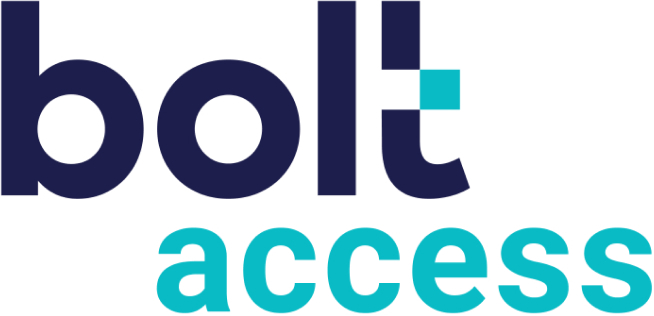
"
First-time home buying is a huge step. While many still consider home ownership to be the American Dream, the process itself can be complicated, confusing and even a little overwhelming.
In fact, some 40 percent of Americans say it’s “the most stressful event in modern life”, writes Kelsey Ramirez at HousingWire Magazine. One-third admit to shedding tears at some point. That’s why the first-time home buying process is one that anyone would be grateful to have someone walk them through.
Now, imagine you’re an insurance agent who’s provided a customer with rental insurance for the last five years and you’ve built a strong rapport with them. Here’s how you can act as a trusted advisor to that customer when they’re considering homeownership.
Explain the Differences Between Rental Insurance and Homeowner Policies
There’s quite a bit of overlap between renters and homeowners insurance. They both cover many of the same perils like fire, lightning, smoke damage, theft and vandalism. There are, however, some significant differences, with one of the most obvious being that renters insurance is typically optional, while homeowners is deemed necessary.
“Sure, renters’ insurance was ‘highly recommended’ but homeowners insurance is absolutely necessary to protect your investment, your belongings, and your mortgage,” writes Salt Lake City-based real estate agent Dustin Brohm. “In fact, pretty much all mortgage lenders require it.”
There’s also a big difference in price. Logan Sachon, cofounder of The Billfold, a personal finance site for millennials, writes that the average cost of renters insurance in 2019 was $188 per year, or just under $16 per month. On the other hand, homeowners insurance was $1,173 annually, or nearly $100 every month.
Homeowners policies usually have higher deductibles, according to insurance quote comparison site Cover. If for instance, a renters policy has a $500 deductible, a customer will get $750 to replace a stolen possession with a replacement cost value of $1,250. But with homeowners insurance, they’ll only receive $250 if their policy has a $1,000 deductible. This is something your customers should be aware, not only because of the lower payout, but also because claims can cause homeowner insurance premiums to rise.
Homeowners insurance should definitely be a primary focal point of your discussions. So be sure to thoroughly break down the differences between it and renters insurance. You may even want to create a piece of educational content like a PDF, video or pamphlet to succinctly outline the two types of coverage.
Go Over Homeowners Insurance Options
Next, it’s helpful to give a customer a rundown of what they can expect with homeowners coverage. Perhaps the easiest way to do this is to explain what a standard homeowners insurance policy covers and then go over common optional coverages.
Standard coverage includes things like dwelling protection for a home and attached structures, personal property coverage to replace belongings, liability coverage and additional living expenses if a person must be temporarily relocated during home repairs, explains Alex Glenn at NerdWallet.
He points out some additional types of coverage that aren’t included under a standard homeowners policy, including water backup coverage for damage from a burst pipe and enhanced dwelling protection to pay for construction repairs to rebuild a home.
Customers should also be aware that a standard homeowners insurance doesn’t usually cover major damage due to natural disasters like flooding and earthquakes, notes personal finance blogger Kevin Mercadante. That means you should touch on flood and earthquake insurance, especially if the homeowner lives in an area prone to these types of disasters.
In addition, homeowners located in areas that frequently experience high wind speeds may also want to consider adding windstorm insurance coverage to their policy, writes the team at insurance comparison site The Zebra.
Discuss the Costs of Home Maintenance
A customer who has been renting for several years likely has little experience with home maintenance. Maybe they’ve changed light bulbs, replaced batteries on smoke detectors and even changed furnace air filters. But beyond that, they probably just called their landlord whenever something major happened.
Home maintenance is much more involved and comes with a long list of responsibilities. As home improvement writer Dixie Somers puts it, home maintenance is something many new homeowners don’t give much thought to until something breaks.
You can help your customer by talking about the ins and outs of home maintenance. There’s a lot that goes into it, but some of the essentials include regularly cleaning gutters, inspecting HVAC systems, flushing out clogged pipes and draining the hot water heater, explains Brittany Anas at Apartment Therapy.
You may even want to provide customers with a home maintenance checklist that shows them what to work on each season of the year. Remodeling and home improvement authority Lee Wallender created an ultimate home maintenance checklist that you can point your customers to. That way they’re less likely to get hit with any major curveballs and will be better prepared to handle any home maintenance issues that come their way.
In terms of cost, Americans spend an average of about $16,000 annually on home maintenance, according to real estate and personal finance writer Michele Lerner. So this is a good ballpark number to give new homeowners when figuring out how much they should set aside for home maintenance each year.
Mention Other Common Expenses
In addition to homeowners insurance and home maintenance, there are a few other expenses individuals should be aware of as they make the transition from renting to home ownership.
There’s property tax, for example. A homeowner can expect to pay somewhere between 1 to 2 percent of the total value of their home each year, writes Madison Fisler Lewis at North Carolina Housing Finance Agency.
She notes homeowner’s association fees too, which will apply to certain people. “For some single-family homes and for condos and townhomes, you may be required to pay a monthly homeowner’s association fee that covers shared community amenities,” Lewis explains. “This fee varies between a few hundred and a few thousand dollars annually depending on your association.”
You don’t want to overwhelm your customers with these expenses, but it’s important that they have a realistic idea of the costs that come along with homeownership so they aren’t caught off guard.
Talk About How Homeowners Can Save
Up until this point, we’ve focused on the costs involved with homeownership. But what about the savings? This is an important final topic because there are some definite savings that new homeowners can benefit from.
For starters, interest on a mortgage is usually tax-deductible. “At the end of the year, you’ll be sent a 1098 form by your mortgage lender,” says Erika Napoletano at BBVA. “This cites how much you paid in interest on your mortgage and in many cases, that amount is tax-deductible on your personal income tax return.”
This same is true for property taxes, notes Jean Folger at Millionacres.com, a real estate investment education resource. As of 2019, homeowners can deduct up to $10,000 of property taxes or $5,000 if they’re married and filing separately.
Napoletano also mentions that it’s sometimes possible to deduct closing costs, as long as the homeowner files an itemized return. These aren’t savings that all new homeowners are necessarily familiar with, so you’ll definitely want to mention them at some point in the conversation.
Besides that, you may want to share other techniques they can use to save money long term. For example, personal finance and business writer Brian Martucci says green energy systems like solar water heaters and solar panels are eligible for a 26 percent tax credit on the equipment and installation costs in 2020. Using these types of systems is a win-win because homeowners can lower their energy costs and receive tax credits.
Pointing out money saving tips like these shows your customers that you have their best interests in mind, which can help build even more trust.
Simplify the Transition from Rental Insurance to Home Ownership Transition
Making the shift from renting to buying is exciting, but it can also create a lot of anxiety. As an independent agent, there’s a lot you can to simplify the process for your customers.
Your main objectives should be clarifying the differences between renters and homeowners insurance, discussing homeowners insurance coverage, mentioning additional costs and pointing out how home buyers can save.
So when it’s all said and done, you can alleviate at least some of the burden that comes with home ownership and strengthen your relationships with existing customers.
Images by: highwaystarz/©123RF.com, rawpixel/©123RF.com, wavebreakmediamicro/©123RF.com
"
Talk to an expert
Contact us
